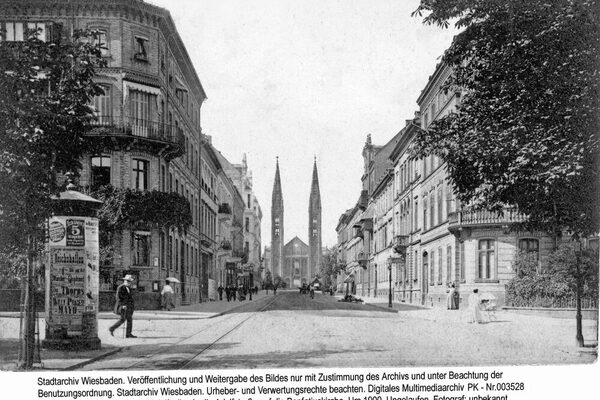Adolfsallee
Adolfsallee, named after Duke Adolph zu Nassau and laid out in 1868-70, continues Adolfstraße in a straight line and thus forms a link between Luisenplatz and Biebricher Allee or, in a broader sense, between Wiesbaden City Palace and Biebrich Palace. At the end of the 19th century, an upscale bourgeois residential quarter with outstanding magnificent historicist buildings was created here. After the Second World War, however, the district underwent dramatic change. Between 1955 and 1975, half of the original residents had left their homes. Service providers, lawyers and doctors as well as public administrations, including the labor court and the police, settled here with their offices and departments. In 1963, the former boulevard was designated as a main road and eventually served as a large parking lot for around 400 vehicles. The end of Kastanienallee was also in sight - the trees were gradually dying off.
In 1973, the further negative development of Adolfsallee was halted: a ban on change was issued for the entire southern city center with the aim of preserving and renewing the district. To this end, large areas of the district were entered in the register of monuments for fear of "speculative destruction". Since 1976, the large parking lot has given way to paved squares and lawns, a fountain and a playground. Through traffic was forced out by one-way traffic regulations. Buildings that had been vacant for years were modernized and demolition applications were no longer submitted. The conversion of Adolfsallee from a noisy thoroughfare to a quiet residential area was awarded the gold medal in a national competition for urban conservation in 1976-78.
Literature
Collection of newspaper clippings from the Wiesbaden City Archive, "Adolfsallee".
